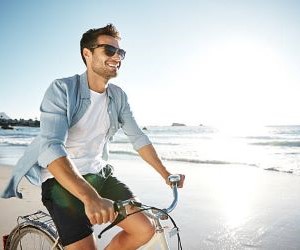Master endurance cycling in tropical climates with effective strategies. Learn hydration, heat adaptation, and training tips for peak performance.
HOW DO I SAFELY CYCLE DURING WINTER TRAINING?
Winter cycling isn’t just for the hardcore—it’s for riders who refuse to let cold months derail their training. However, icy roads, reduced visibility, and harsh temperatures create unique risks. To cycle safely, you need to adapt gear, strategy, and mindset. This article explains how to prepare for winter training, what clothing and bike setups work best, and which safety practices can keep your rides consistent and accident-free. Whether your goal is maintaining fitness, preparing for spring races, or simply enjoying crisp winter landscapes, smart preparation ensures you ride strong while minimizing risks.

Winter cycling challenges
Cycling in winter means confronting environmental, mechanical, and physical obstacles. Cold air affects performance, icy surfaces demand balance, and reduced daylight complicates visibility. Understanding these challenges is the first step toward adapting effectively.
Environmental conditions
Winter weather introduces rain, sleet, snow, and freezing winds—all of which can alter training intensity and safety. Windchill accelerates heat loss, while wet conditions reduce traction and braking efficiency.
Icy roads increase crash risk.
Fog and snow limit visibility.
Cold reduces body efficiency and stamina.
Salt and moisture damage bike components.
Impact on the body
Cold muscles are more prone to strain, and breathing icy air stresses the respiratory system. Dehydration risk also rises because riders often underestimate fluid loss in cold environments. Recognizing these effects allows cyclists to proactively manage recovery and performance.
Essential gear and clothing
Winter riding requires specialized clothing and equipment to keep you warm, visible, and in control of your bike. Proper layering and gear adjustments reduce risks while ensuring comfort on long training sessions.
Clothing layers for winter rides
Layering is the cornerstone of safe winter cycling. The system includes a base layer to wick moisture, an insulating middle layer, and an outer shell to block wind and water. Accessories like gloves, overshoes, and thermal socks protect extremities prone to frostbite.
Base layer: synthetic or merino wool.
Mid-layer: fleece or insulated jacket.
Outer shell: waterproof, windproof, breathable.
Thermal headwear: balaclava or skull cap under helmet.
Bike setup adjustments
Your bike needs to adapt to winter just as much as your wardrobe. Wider tires with lower pressure improve grip, while studded tires provide traction on ice. Full fenders protect you from slush and keep drivetrain components cleaner.
Install lights: front and rear for visibility.
Use reflective tape or decals for added safety.
Lubricate chain frequently to prevent salt corrosion.
Carry multi-tools and a spare tube for quick fixes.
Together, these choices extend your bike’s lifespan and improve your confidence when conditions get rough.
Strategies for safe training
Even with the right gear, safety depends on riding smart. Training through winter requires modifying routines to account for unpredictable weather, reduced daylight, and physiological stress.
Route selection and timing
Pick well-lit, lower-traffic routes with less risk of ice. Avoid shaded corners and bridges, which freeze faster. Ride during daylight whenever possible, and shorten sessions when conditions worsen suddenly.
Plan loops near home for quick exits.
Use weather apps to anticipate storms.
Inform someone of your route and return time.
Training adaptations
Winter is a good time for base-building, not peak intensity. Lower your training load slightly, focusing on endurance and consistency. Indoor trainers can supplement days when outdoor riding is too risky.
Alternate outdoor and indoor rides.
Warm up longer to protect muscles.
Hydrate regularly, even if you don’t feel thirsty.
Listen to your body and rest when needed.
Ultimately, winter training success comes from patience and adaptability. Safe habits ensure you enter spring stronger rather than sidelined by injuries or burnout.
YOU MAY ALSO BE INTERESTED






